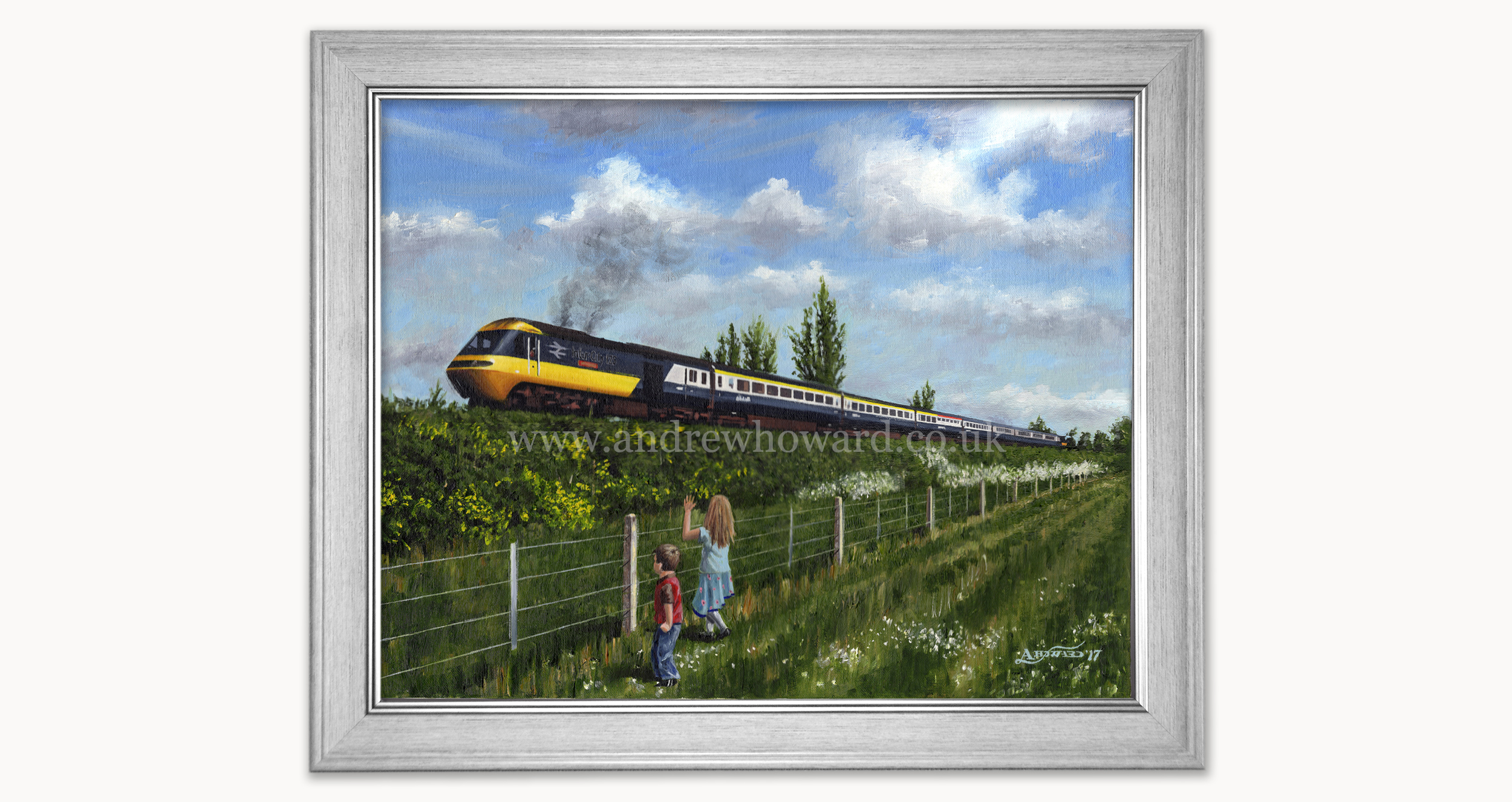


Transport Paintings
A fascination with trains and automobiles and an increasing awareness of the many large and highly detailed railway paintings and bold, imaginative car related artworks, the artist was keen to explore what he could achieve on this topic and produce artworks of equal quality.
"Mallard & Flying Scotsman At The 150th Anniversary Of Doncaster Plant Works", 36" x 19", Oil On Canvas
The first large detailed painting of any kind produced by the artist was of the Mallard and Flying Scotsman steam locomotives at the 150th anniversary of Doncaster Plants Works in 2003. Probably an overly ambitious painting to start on, the scene was created from several photographs combined, one of each locomotive and a more detailed sky than that of the day. The resulting painting took many years to complete.

"Cock O'The North", 30" x 24", Oil On Canvas
Buoyed by the success of the painting of the Mallard and Flying Scotsman shown in modern times, the discovery of the 'extinct' P2 class of locomotive and an old photo of a slightly different looking Doncaster Plant Works provided the seed of the idea for a new railway painting. This painting would attempt to show the then newly built 'Cock O' The North' locomotive sitting outside Doncaster Plant Works ... in 1938! This imaginery scene was very difficult to achieve to a standard the artist was envisioning. Whilst only one locomotive was to be painted this time and to a larger scale than the locomotives in the Mallard and Flying Scotsman painting theoretically making it easier, the difficulty lay in getting the correct colours and look for the period. Modern reference photos show a rusted and faded infrastruture, whilst in 1938 it would have most likely been blackened and oil stained. Colour reference photos were sought and studied from the golden age of steam but there didn't appear to be definitive answers as to how the background look and feel should be painted. Perhaps there weren't any! The tall chimney, though no longer there, fired the imagination as to how the scene could have looked at the time, giving the painting 'height' to go with the depth, having seen the chimney in one black and white photo from the 1860s. No further photos of it could be found to prove how long it was there and with the painting well advanced, it was then thought to have been demolished long before 1938. Despite the painting's development difficulties, with it's large size, incredible detail and wide perpsective, the overall effect of the finished painting proved to be a spectacular sight for the eyes!

"The Flying Banana!", 20" x 16", Oil On Board
It had once been explained to the artist very precisely that the steam locomotives that excite the UK male populous of certain age, are all from a particular era, the mid to late 1930s. If you include the Flying Scotsman you can go further back to 1923, but all these locomotives were still being used to do the job they had been made for when their current legions of fans were still young, subsequently gaining great affection. The artist, being a generation younger, didn't have the first hand recollections of these magnificent steam locomotives. So what were the iconic locomotives to him from his childhood which are remembered fondly? The Inter-City 125 was the latest, state of the art train at the time (rather than locomotive) that provides vivid childhood memories as it hurtled through the countryside, it's nickname 'Flying Banana!' accompanying a pointing finger to alert his family to it's brief presence alongside the car. So what better subject to paint next? After the arduous process of painting Cock O' The North, a looser style similar to that of Terence Cuneo was tried for this typical 1980s scene of a Flying Banana!
